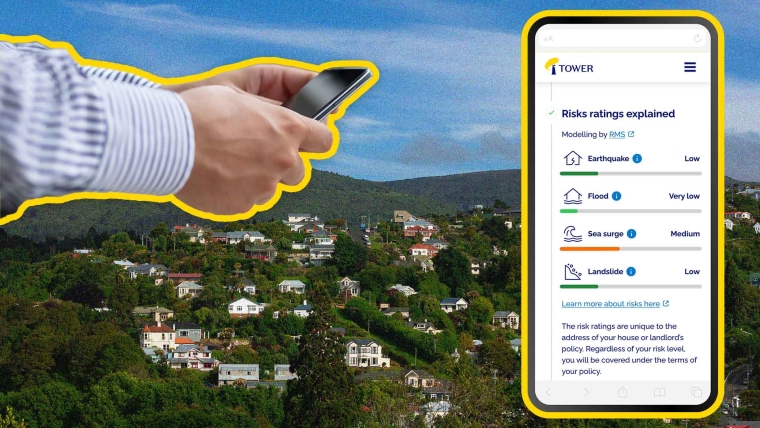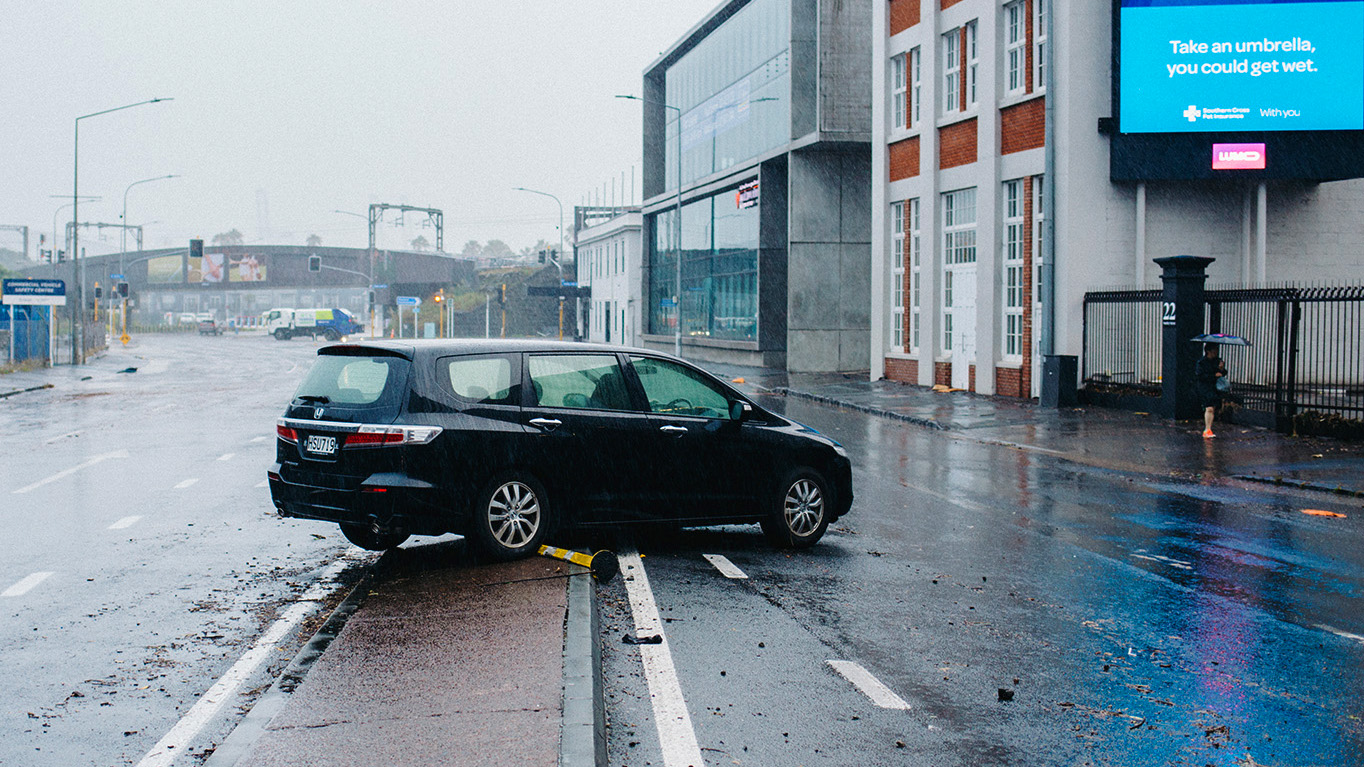
Tower Insurance is adding landslides and sea surges to its risk-based pricing with the general insurer saying some people will see an increase in their premiums.
Tower Insurance gives the properties it insures ratings such as very low, low, medium, high or very high when it comes to earthquake, flood - and now sea surge and landslide risks. This rating influences the estimated cost of replacing or repairing damage.
So, the lower the risk of a natural hazard at that property, the lower a person’s natural hazards portion of their premium would be.
On Wednesday, Tower announced the expansion of its risk-based pricing.
With the addition of landslide and sea surge risk ratings, the insurer says fewer than 10% of properties will see an increase in their premiums while over 90% of its customers will have a reduction in the natural hazards portion of their premium - with an average savings of $70 per property.
Tower chief executive Paul Johnston says people should only pay for the risks that apply to their home, not someone else’s.
“Expanding our risk-based pricing model is a fair and transparent way to support this.”
“Insurance is vital for the personal and economic resilience of our communities. Tower’s evolution of risk-based pricing reflects New Zealand’s need to be more prepared.
“As a nation, we must focus our collective efforts on climate change adaptation, which is what will ultimately help keep insurance accessible and affordable in the long term,” Johnston says.

To help calculate detailed risks specific to people’s properties, Tower works with Moody’s for flood and earthquake risk-based pricing, Haskoning for sea surge risk-based pricing and Swiss RE for landslide risk-based pricing.
Tower says it will support customers with higher sea surge or landslide risk by smoothing annual increases over a period of up to four years.
When the next insurance event occurs
In a recent survey commissioned by Tower, it found that while 79% of New Zealanders have not been impacted by a climate-related weather event on their home, 31% are concerned about the impact of natural disasters and 5% say they don’t feel safe in their property to withstand a climate-related weather event or natural disaster.

Of the 31% who expressed concern, 61% were concerned about earthquakes, 48% were concerned about flooding, 17% were concerned about landslides, 10% were concerned about sea surge and 4% were concerned by other events.
Recent modelling predicts rainfall from tropical cyclones will significantly increase under global warming.
Research from Earth Sciences New Zealand and the University of Waikato found under a high emissions scenario, extreme rainfall from cyclones could rise by up to 35% across the southwest Pacific - including for ex-tropical cyclones impacting Aotearoa.
It’s no longer a matter of ‘if’ but ‘when’ the next major weather event occurs - and in turn, the next insurance event occurs, the head of insurance at financial markets conduct regulator the Financial Markets Authority (FMA) has previously said.
The FMA has previously called on the insurance sector to tailor and review their claims processes to make sure consumer needs are met.
Alongside this, a study has recently found 71% of people who have interacted with the general insurance sector in the past 12 months say they don’t believe their insurance provider fully delivers on their promises.
Insurers not delivering on promises
The study, called the Brand Experience Gap study, looks at the gap between what a brand promises compared to what they deliver to customers. It’s produced by Accenture Song, a tech-powered creative group. A total of 1527 people took part.
In New Zealand, the study looked at 65 brands across six different sectors including financial services, telecommunications, general insurance, utilities, media and entertainment, and travel and tourism.
Brands were measured by how the people being surveyed responded to nine statements representing things like brand values. Examples of this are: “They are simple and easy to deal with.” Some statements were also sector specific with people receiving statements like “they actively protect me against fraud” for financial services brands.
The people surveyed say the key areas insurance providers are failing to deliver on are:
- doing more to actively reduce risks from things like crime, floods and fire
- giving back to loyal customers
- utilising the latest and most intuitive technology to make things simple and easy for customers
And overall 72% of New Zealanders surveyed say companies are failing to live up to the promises they make.
The economic climate is a massive indicator as to how customers are feeling at the moment, Accenture Song NZ lead and Droga5 Aotearoa chief executive Storm Day says.
“Expectations, of course, are really high. People are being really intentional about where they’re spending their money and what brands they’re loyal to,” Day says.
“It makes the promise that a brand puts out in the world even more important.”
Day says when it came to insurance providers, it was about thinking about honing in on the customer experience they offer.
“Where are the moments where we’re leaning in? Where are we making it quick and easy for people?”
“When you’re in a situation and you need quick cover or quick help, you want that response rate to be really high but then there are also those moments where you really need that human connection and reassurance,” Day says.
“I think the outtake for us is that customer experience is a really, really critical strategic lever in an organisation and we find what is quite critical to closing the gap is having a really clear and meaningful purpose at the heart of your organisation.
“When that happens and it guides the operations, your culture and also customer experience end to end, that’s where you start to see that shift changing.”
2 Comments
The insurance market is ripe for a competitor to pick up all the low risk properties. Our house insurance has gone up heaps, yet we live well above sea level, no real risk of earthquake, not on a cliff, weren’t affected by flooding, etc.
It night to start to affect the inertia of changing providers. Cost is up there now, motivation to move kicking in.

We welcome your comments below. If you are not already registered, please register to comment
Remember we welcome robust, respectful and insightful debate. We don't welcome abusive or defamatory comments and will de-register those repeatedly making such comments. Our current comment policy is here.